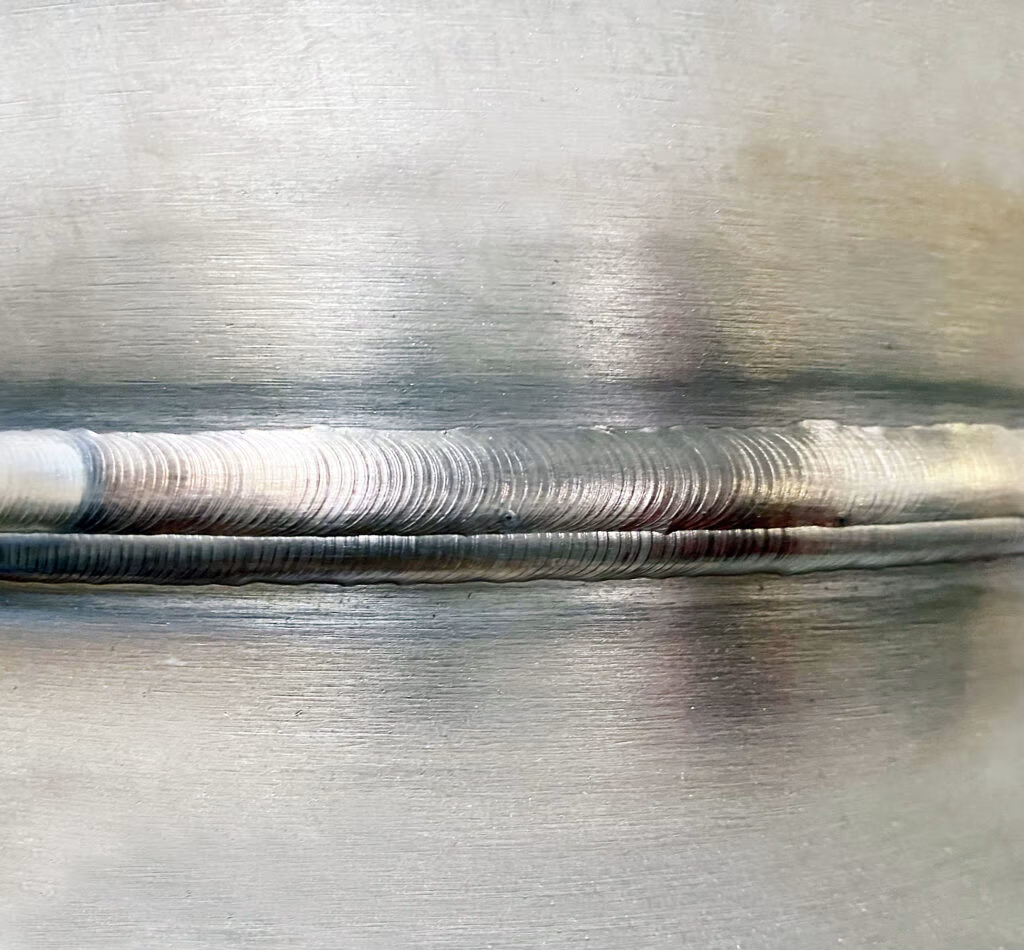The Benefits of Orbital Welding on Sanitary Tube
What is orbital welding?
Orbital welding is an incredibly valuable tool when it comes to creating sanitary pipelines. This technique allows for a uniform weld around tubes and pipes, eliminating the possibility of operator error that can occur with manual Tungsten Inert Gas (TIG) welding. By rotating the welding tool 360° (or 180° in double up welding), a consistently strong weld is achieved along the length of the tube or pipe. This is important for ensuring that liquids and gases remain uncontaminated, making it ideal for use in the food and beverage industry, healthcare, and manufacturing applications. Orbital welding is fast, efficient, and ensures a uniform weld without sacrificing quality.
What is sanitary welding?
Sanitary welding is a specialized welding process that involves joining metal components in a way that meets the safety and health standards for the food, drug, and dairy industries. The key difference between sanitary welding and other types of welding is that it reduces the number of potential contaminants that could potentially make the products unsafe for human consumption. This is achieved by using special orbital processes and equipment that are specifically designed to weld tubes and pipes sanitarily (Like O.D Purge Caps and Closed Weld Heads).
There are two types of sanitary pipelines; wet lines which can handle raw or treated water as well as liquids, and dry lines which can only transport gas.
-Wet Lines: Wet lines offer many benefits including enhanced corrosion resistance and strength properties. .jpg?width=386&height=439&name=pipe-vs-tube%20(2).jpg) They also allow operators more flexibility when installing the system because they don’t need to be welded into position unlike dry lines which need to be aligned carefully with their counterparts.
They also allow operators more flexibility when installing the system because they don’t need to be welded into position unlike dry lines which need to be aligned carefully with their counterparts.
-Dry Lines: Dry lines provide a cleaner environment because they protect users from exposure to gasses or fluids that may have been leaked from another pipe or device upstream from them
Why is orbital welding good for sanitary applications?
Like mentioned above, orbital welding machines use a tungsten electrode to create an arc inside the tube or pipe. This arc melts the metal at the joint and forms a strong bond between the two pieces. This ensures that there are no gaps or weak spots at the joint, preventing any contaminants from getting in. This process also prevents distortion of the tube or pipe during welding, which can cause disruption in the flow of liquids or gases. Sanitary welding is a key part of the manufacturing process for many food and beverage production lines, as it helps ensure that all of the necessary components are properly joined together with minimal risk of contamination. By using orbital welding machines, companies can produce high-quality, safe equipment that meets all industry standards
What happens if sanitary welding requirements aren't met?
When it comes to sanitary welding, there are specific requirements that must be met in order to ensure safe delivery lines. If these requirements are not met, the results can be disastrous and pose a health risk to the public. Sanitary welds must be completed with precision and care, and any potential leaks or protruding joints must be eliminated. Contaminants can become stuck in the crevices and in the filler material of a hand weld. Over time these contaminants build up and begin to influence the end-product, potentially transmitting pathogens.
Orbital welding helps reduce these risks by creating consistent welds that penetrate without pooling up on the inside of the tube. MIT specialized in providing sanitary welding solutions. Get a quote or connect with a rep to learn more.
Orbital welding helps reduce these risks by creating consistent welds that penetrate without pooling up on the inside of the tube.
Dec 12, 2022 10:38:22 AM



.png)
Comments